The global acceptance of 400g fiber optic technology further enhances the pace at which data is transmitted, thereby meeting global demand trends. This blog examines the crucial details and the scope of 400g fiber optic cables and transceivers. Understanding 400g fiber optic technology and the degree of development of these technologies will be the subject of our discussion regarding the types of 400g transceivers and other form factors like 400g OSFP transceiver types and the types of related optical fibers. In conclusion, the technological and organizational aspects of 400g systems affecting the future of data connectivity are presented to allow organizations and individuals to adapt these networks to enable better performance.
What are the Different Types of 400g QSFP-DD Transceivers?
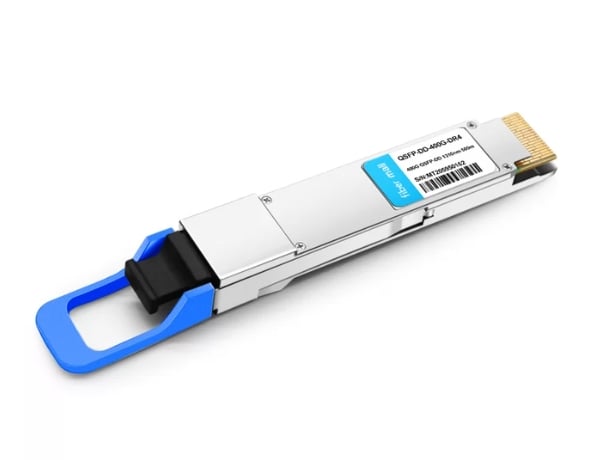
The 400g Quad Small Form-factor Pluggable Double Density (QSFP-DD) transceivers are classified according to their media and reach. The major ones are:
- 400GBASE-SR8: This type of sr-gigabit ethernet supports short-range and employs multimode fiber to 100 meters.
- 400GBASE-LR8: This type can transmit long-distance signals through single-mode fiber up to 10 km, making it best suited for long-haul communications.
- 400GBASE-ER8: This type pertains to the extended range module that utilizes single-mode fiber covering a distance of approximately 40 kilometers, which is for large-scale network architecture.
- 400GBASE-DR4 is an important standard in high-speed transmissions over optical fibers. This type is normally used in datacenters, is capable of transmitting signals over distances of 500m on single-mode fiber, and allows tight couplings.
- 400GBASE-FR4: On the other hand, it provides a maximum coverage of up to 2 km when paired with single-mode fiber. This type of technology is more cost-effective, especially in metropolitan areas.
This technology delivers the fundamental principles of the 400g, and the cascading performance of the above technologies in various networking spaces shows that each one has a specific function and best fits a particular environment.
Overview of 400g QSFP-DD Transceivers
400g QSFP-DD modules are a great leap forward for optical communication technology as these are aimed at meeting the need for a high volume of traffic exchanged at a high speed. They are usually housed in a QSFP-DD port. These transceivers cover a broad range of applications and distances, from short ranges in data centers with 400GBASE-SR8 systems to ultra-long distances in telecommunications with 400GBASE-LR8 and 400GBASE-ER8 transceivers. Their flexibility and efficacy are increased by incorporating PAM4 modulation technology and using multimode and single-mode fibers. For businesses that want to enhance their network capacity, improve bandwidth usage, and make their infrastructure suitable for the increasing complexity of digital connectivity, the adoption of 400g QSFP-DD transceivers is a must.
Comparing 400g QSFP Transceiver Types
During the analysis of 400g QSFP transceivers which are of different types, it is critical to consider parameters such as distance performance, cost effectiveness and application requirements. For instance, the 400GBASE-SR8 performs well for close-range communications in the data centers, enabling cost-effective and high data transfers. On the other hand, single-mode fibers, 400GBASE-LR8 and 400GBASE ER8 are designed to carry out long-range transmissions of about 10 kilometers and 40 kilometers, respectively, making them applicable for long-distance telemarketing as well as large network generation, especially when combined with this 400g optical transceivers. In a data center environment, 400GBASE-DR4 caters to medium distance requirements of up to 500 meters with reasonable distance and cost. Finally, 400GBASE-FR4 offers a tradeoff with a range of up to 2 kilometers, which is suitable for metropolitan area networks. Therefore, in conclusion, the critical considerations in determining the type of transceiver type to use would be the network characteristics, distance to be covered, and the economic considerations to ensure that the transceiver delivers the required functions and performance.
400g QSFP-DD SR8 Transceiver Features
The transceiver’s design is that it weighs about 400 grams and is built around data centers switching networks. Furthermore, this transceiver uses PAM4 technology, robustly delivering 8x50G towards MMF with OM4 fibers and OM3 fibers spanning OM4 at 100 meters and OM3 at 70 meters, respectively. It is also compact, increasing network equipment’s port density and providing greater flexibility. The efficiency of the QSFP-DD SR8 in terms of power and latency makes it a great match for the tasks of expanding and cost-reducing data centers, which improved the degree of connection and lowered the overall costs of the data center. Furthermore, it can be used with current infrastructure, making it an excellent option for data centers that demand strong integration.
How Does 400g Ethernet Benefit Data Centers?
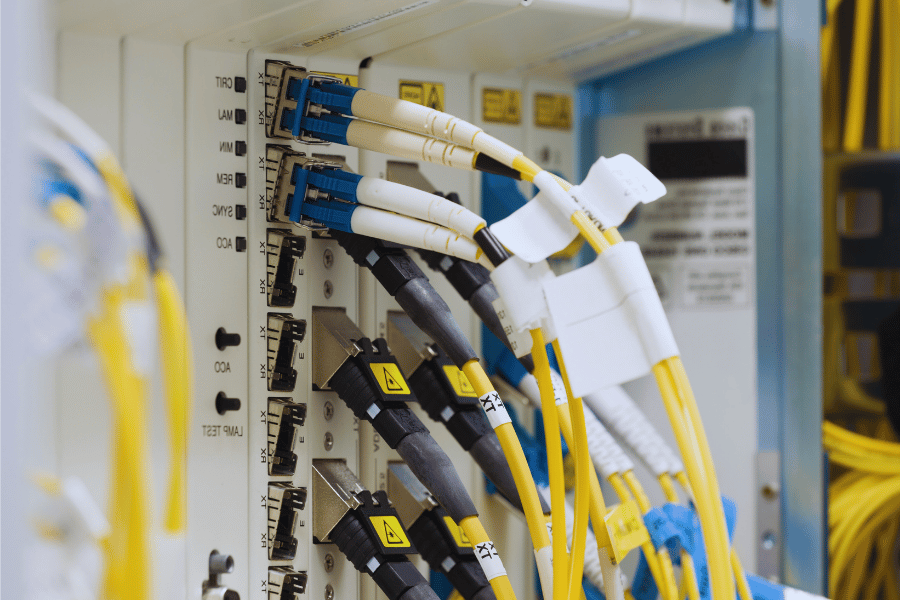
Advantages of 400g Ethernet in Data Centers
Data centers are enhanced with the integration of 400g Ethernet as it offers greater bandwidth capable of meeting increasing amounts of data while allowing users to manage a variety of applications at the same time. Providing a high data transfer rate compared to previous generations also cuts down on network bottlenecks, thus improving throughput. Furthermore, 400g Ethernet enables higher cloud service access speeds and scalability, critical for modern enterprises’ ever-changing workloads. Its streamlined form factor also helps reduce costs by merging network devices, minimizing the amount of hardware needed and cutting down energy usage. All in all, 400g Ethernet is instrumental in modernizing data center architecture, supporting new trends and increasing the effectiveness of the facility.
Implementing 400g Ethernet in Modern Data Centers
Integrating 400g Ethernet in meshed and modern data centers would call for a proper plan and strategy that guarantees operational efficiency. The first plan I will implement is assessing my existing infrastructure’s 400g capabilities and integration into the existing structure. This could involve replacing different equipment, such as transceivers, cables, and switches, to accommodate high levels of data flow. I will then proceed to design the network with the scope of making low latency and optimizing the increased need and availability of bandwidth, which recent and advanced network management tools and SDN solutions could enable. Also, developing new IT technology is critical for operation and maintenance. So, by implanting 400g Ethernet technology, I can increase the projected scale of my data center and secure it from the effects of the increasing rate of development of robust computational and data-saving systems. This move would grow efficiency and cut costs by great margins.
Challenges of Upgrading to 400g Ethernet
Adoption of 400g Ethernet has dire prerequisites that significantly affect existing duplex connectivity. For one, due to the increased capex associated with high-powered switches and other appropriate transceivers, the Ethernet interface becomes daunting, making the financial investment significant for any company. Also, introducing convergence of new technologies into legacy designs always presents compatibility challenges, which, if not planned and executed carefully, will create problems. The same is the case with the specialized skills and training of the IT team in the advanced network equipment node within the infrastructure. Once the concept is approved, there can be further apprehensions with the management regarding how the new equipment may increase overall power consumption and heat produced, necessitating a change in the cooling and energy management systems in place. This makes the equipment upgrade more challenging. The times of migration to the 400g Ethernet should meet fine standards to meet application requirements.
What are the Key Features of Tripp Lite’s 400g Solutions?
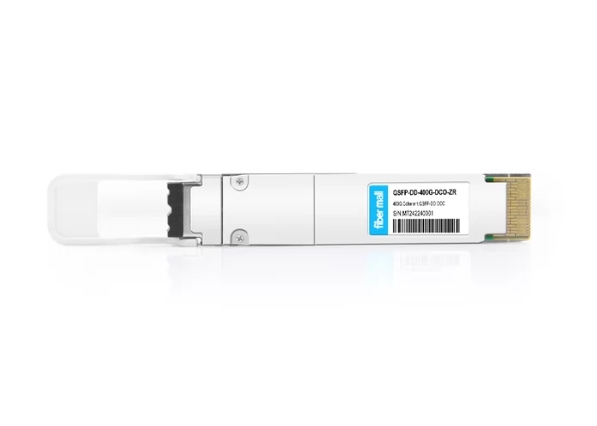
Exploring Tripp Lite Series 400g Multimode
The features offered by Tripp Lite’s Series 400g multimode solutions are specifically designed to maximize high-speed data transfer and efficiency in data centers. These solutions are designed to be integrated into existing infrastructures and offer higher bandwidth demand management capabilities, making them more scalable. One of the notable features of the Tripp Lite Series is that it can be used alongside the currently installed multimode fiber systems, hence reducing issues related to restructuring of the entire infrastructure. Besides, the series employs up-to-date technologies that are aimed at cutting down on latency and power usage, which in turn leads to more eco-friendly operations. The simple network management interfaces that come with the solutions aid in monitoring and troubleshooting network issues, making it easier to restore the health of networks when they fail. Overall, the combination of high performance and low energy usage of the Tripp Lite Series 400g Multimode solutions is in line with the changing trends in data center technologies.
Tripp Lite 400g LC Connector Benefits
The Tripp Lite 400g LC connectors can offer several benefits when operated in high-speed data environments. First, their structure is made to achieve perfect alignment, which helps lower the insertion loss while maximizing the data throughput. Moreover, since the common problems in a network environment concern cross-talk and loss of signals, CBC technology, which has been incorporated into these connectors, helps to maintain proper signals in dense networking environments, which is critical in minimizing cross-talk. It’s also worth mentioning that all types of network topologies can be implemented because they enable the use of both standard and high-density patch panels. LCs have proven more reliable in some installations, providing a durable, low-maintained connection. All in all, the Tripp Lite 400g LC connectors are an essential piece of the puzzle that enables effective and efficient high-capacity networking.
Using Tripp Lite 400g for Optimal Network Performance
Using Tripp Lite 400g solutions to improve network performance, the first thing they must think of is how to network these protocols with the already present protocols and how the advanced features of these products can be used. Order these as the first renovation targets and use the multi-mode fiber systems to fortify network capacity, targeting minimal disturbances and exorbitant structural revisions. For construction work make sure to incorporate the series’ low latency and excellent power efficiency technologies to keep operational costs relatively cheap while still being able to perform significant quantities of work. Furthermore, do not hesitate to take some of the management interfaces of the series as they are straightforward to use, brilliant in monitoring system status, and allow for swift addressing of problems, helping maintain the network’s quality and consistency. As the only area of focus becomes specially made for in-detail LCs, it enhances the in-and-out quality and is a must-have for high-speed environments. These moves have been proven to assist Tripp Lite 400g solutions and provide exceptional performance for more advanced type networks, particularly data center networks.
How Do 400g QSFP-DD Cables Improve Network Infrastructure?
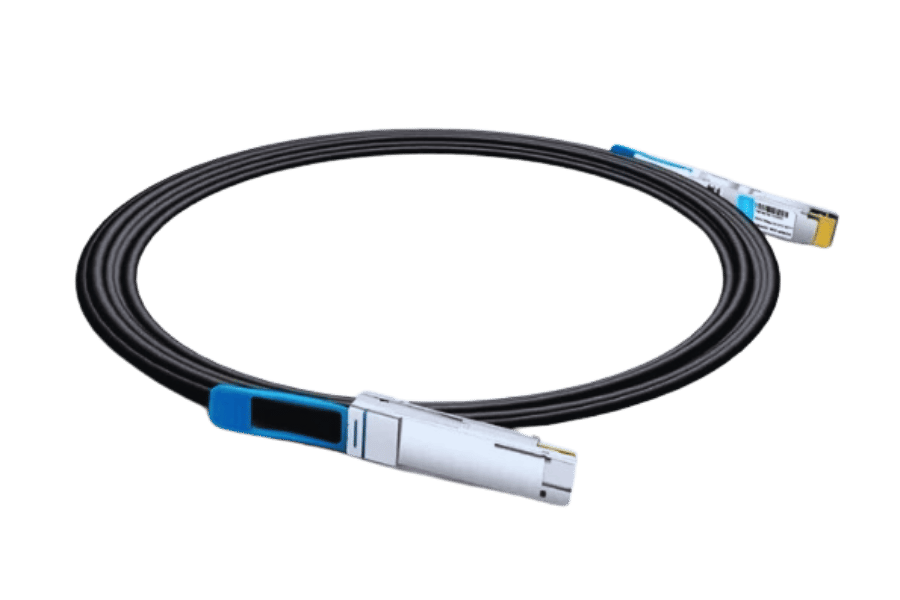
Benefits of Using 400g QSFP-DD Cables
The 400g QSFP-DD cables enhance network infrastructures by providing high-density data transfers, vital for data centers and enterprise networking solutions. These cables can support up to 4 times more data rates than previous generations, effectively increasing bandwidth and scalability. Their robust design minimizes electromagnetic interference to ensure the highest quality signal integrity, which is essential for accurate data transmission in large-scale network systems. Moreover, deploying the QSFP-DD form factor guarantees compatibility with existing systems, conserving real estate and reducing the intricacy of operation in network environments. The integration of these cables allows the network infrastructure to be future-proofed through the facilitated extensiveness and the mobility of data requirements with the slightest disturbance.
Comparing 400g QSFP-DD with Other Cable Types
Another type of cable that differentiates from others is the lightweight 400g QSFP-DD. Focused on Wire speed data transfer, it has a small form factor and is retrofittable. Looking at the performance improvement, the 400g QSFP-DD outperforms the previous generation of cabling with 100G and 200G systems. Increasing the data throughput in higher demanding networks. As these QSFP-DD are copper cables, Bas recently hinted at their eco-friendly design. Because the form factor is backward compatible, it avoids
the headache of system upgrades. Also, the cables have strong electro-magnetic shielding, which ensures the transfer of well-defined signals by reducing any possible errors during the transfer. Older cable technologies lack in that respect and may be inefficient and less scalable. Thus, 400g QSFP DD cables and advanced technological investments are better for data centers looking to expand in growth and capacity.
Choosing the Right 400g Ethernet Cable for Your Needs
There are a few basic elements to bear in mind to acquire a 400g Ethernet cable that will function at a high level with your network infrastructure, given that it will be used in an allocation. Assess the specific application parameters, such as the bandwidth, the reach, and the environmental aspects. Knowing this information will help cut different 400g cable options, such as optical cables for longer reach data and high-density data centers or copper cables for short reach and low-cost deployments. On the other hand, compatibility with older equipment and other support features, such as backward compatibility, must be considered to reduce interruptions during the integration process. Finally, consider the total cost of ownership, which includes the first cost of acquisition, energy efficiency, and maintenance cost throughout the life of the cable. Such cognitions assist in achieving the short-term goal of the intended application and long-term plans for network evolution.
What Role Does Optical Transceiver Technology Play in 400g Networks?
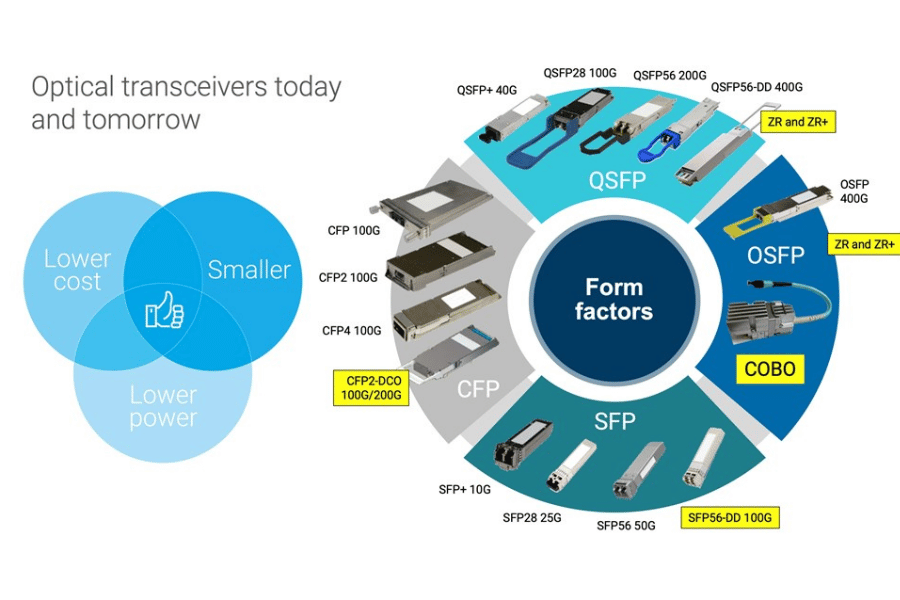
Understanding 400g Optical Transceiver Functionality
The 400g optical transceivers represent the most important instruments within today’s data networks; they serve to encode electronic signals into optical signals, as well as the other way around, to enable high data transfer rates through fiber-optic cables. Their significance becomes apparent with the realization of the increasing bandwidth and low latency requirements that the succeeding generation of 400g networks will encompass, especially where duplex applications are involved. Due to their ability to transmit large amounts of data over large distances, 400g optical transceivers are most useful in data centers and telecommunications networks. These devices combine, split, and recombine data streams, facilitating dependable and robust signal transfer. In addition, due to the development of optical technology, these transceivers have been able to lower power usage, increase scalability, and enhance the overall reliability of the network, thereby making it easier and more efficient to exploit the opportunities that these 400g networks provide fully.
Optical Module Variants in 400g Networks
Contemporary 400g networks have different optical modules that are meant for meeting distinct network needs. The most commonly used variants include, QSFP-DD (Quad Small Form-factor Pluggable Double Density), , 400g OSFP transceiver types overview further elaborates the progress in optical communication technologies. (Octal Small Form-factor Pluggable) and CFP8 (C Form-factor Pluggable 8).
- QSFP-DD: One of the most sought-after optical modules available today is the QSFP-DD type. This follows the 400 GBs standard and contains eight electrical lanes that can support 50 GBS each. This has made the module small, with the benefit of not requiring a change from the existing setup.
- OSFP: OSFP does not follow backward compatibility with older models like the QSFP-DD. However, with the elimination of backward compatibility, OSFP is able to provide better thermal issues due to increased power consumption. Designed to be ready for the next generation of optical technology, this will allow for either the current communication at 400 Gbps or, in the very near future, 800 Gbps communication.
- CFP8: The CFP series is a default technology, and this family also extends up to 400 Gbps. Regarding size, 400G CF8 plugs and transceivers are larger than QSFP-DD and OSFP. Therefore, they are meant for carrier-grade applications where size is not a major hindrance. These modules facilitate long-distance transmission, supporting interconnects with telecom networks and data centers, which require extensive coverage and high interconnection performance.
These variants of optical modules are important for tailoring the 400g cable architecture and for effectively using the 400g network-reaching environments, as they determine the structure and functionality of most of today’s cable environments.
Future Trends in Optical Transceiver Development
The innovative optical transceiver technological progress occurs by looking at high-speed transmission requirements with better energy efficiency and long-distance coverage. There will be more possibilities for using silicon photonics, which means integrating photonic circuits into silicon chips, achieving cost and power savings while doing the job. One cannot leave out the potential changes that coherent optics will bring to long-distance data transmission in terms of higher data rates and improved spectral efficiency. There is a growing trend of using pluggable coherent transceivers, which are also modular in nature and make the network changeover much more accessible. As this requirement keeps varying, the manufacturers address the need to improve transceivers to the new gigabit Ethernet ones for easier incorporation into different network structures. These advancements are expected to provide solutions to businesses’ rising data traffic requirements, such as telecommunication and data centers.
How to Optimize Fiber Patch Cable Selection for 400g Applications?
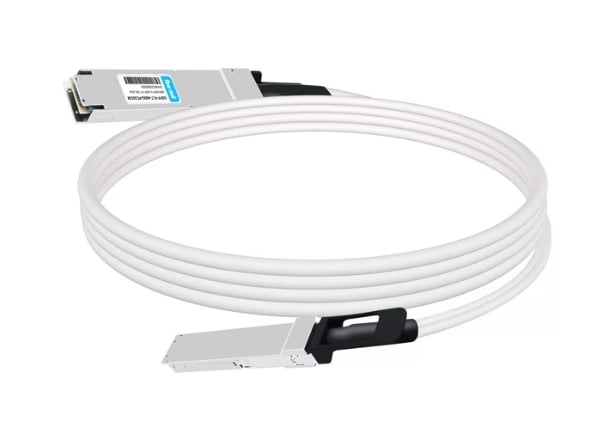
Factors to Consider When Selecting a Fiber Patch Cable
A 400g application can greatly benefit from fiber patch cables, but other issues should be considered. First of all, here are the few that are most critical For example:
- Modalities of Transmission: There are two options: single mode fiber, which is capable of high and high capacity transmission, which is more suitable for long distances, or its alternative multimode fiber, which is more suitable for short distances. Therefore, both require careful consideration of the application requirements.
- Connectors Incorporated: The LC, SC, or MPO connectors are commonly used in a 400g application. Therefore, it is critical to consider the connectivity of all the devices incorporated in the network.
- Insertion Loss and Return Loss: These factors and their specifications are critical in enhancing the signal. Due to the distance, such losses can result in errors in data transmission. Therefore, two factors are crucial in maintaining a stable signal. Connectors and the correct cable type must be used based on the distance required.
- Cable length: Such factors should not be ignored. Device interconnectivity requires cables, and bending or kinking wires misalign them to get perfect connections. Simultaneously, it also affects the quality of the signal being transmitted. Everything has to be calculated correctly to avoid interference.
- Operating Environment: Such conditions include humidity, temperature, and exposure to electromagnetic interference. The materials and designs should be strong enough to withstand these conditions.
All such factors can be easily focused on if addressed correctly to enhance the performance and interconnectivity of fiber patch cables used for 400g network applications.
Benefits of Using Multimode Fiber in 400g Networks
In addition, there are distinct benefits that enhance the overall performance and economic efficiency of the enterprise when deploying 400g networks with the use of multimode fiber including:
- Cost Efficiency: Multimode transceivers and fibers are more affordable than their single-mode counterparts. This cost advantage may be quite beneficial in short-distance applications where costs are an important factor.
- Ease of Installation: Larger core of multimode transmission fibers helps in easier alignment of connectors and looser tolerances which translates to ease of installation and maintenance. This can be crucial in areas requiring rapid installation and or changes.
- High Bandwidth Over Short Distances: Multimode fibers are effective for high bandwidth transmission over shorter to medium lengths which makes them suitable for data centres and enterprise settings where transmissions are usually of short reach.
- An important factor of concern while designing 400g transceiver types and connections to the fiber interfaces is the Energy Efficiency. The transmitters that are paired with MT fiber generally work with lower power as compared to those with SM fiber thus reducing operating costs.
To sum up, the use of multimode fibers allows the deployment of 400g network applications while considering the best performance, economic sense, and logistical requirements.
Single-Mode vs Multimode Fiber: Which is Ideal for 400g?
The choice between using a single-mode or a multimode fiber for 400g networks primarily depends on the application’s specific requirements, such as the distance, cost, and necessary bandwidth. Long-haul transmission relies on Single-mode fiber, which effectively supports higher bandwidth over longer distances. Nevertheless, it also implies advanced transceivers and alignment complexities, which adds to the cost. On the other hand, multimode fiber is best used for short and medium distances since it provides a low-cost and low-power solution that is also easier to install and maintain. Due to their sufficient performance relative to cost, multimode fiber cables are most common for companies based strictly on data centers or operating in areas where transmission distances are short. At the end of the day, the best choice is to evaluate the needs of the network and its surrounding factors.
Reference Sources
Frequently Asked Questions (FAQs)
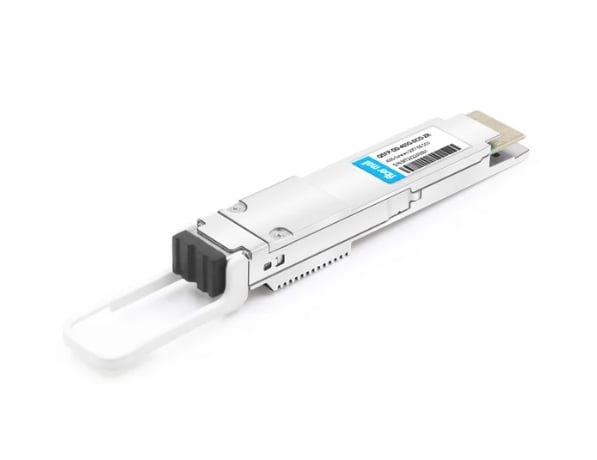
Q: What do you mean by 400g fiber optic cable, and what makes it unique compared to a 100g version?
A: 400g fiber optic cable can also be referred to as a next-generation network cable, which has 400g single cable transmission, four times faster than a single 100g cable. It can be used effectively in 400g Ethernet applications as they function exceptionally well within high-speed data sourcing frameworks and enterprise systems and networks. The sensitivity and speed at which it operates is far better than a 100g solution.
Q: What 400g QSFP-DD transceiver Types Are Commonly Used?
A: Common 400g QSFP-DD transceiver types are 400G-SR8, 400G-DR4, 400G-FR4, and Table 400G-LR4. These transceivers differ in terms of the range they can transmit over, the kind of fiber used, and the mode of wavelength multiplexing. The selection solely depends on the network’s demands and the features of the network’s existing solutions.
Q: What are the uses of a 400g breakout cable?
A: One of the primary uses of a 400g breakout cable is allowing a 400g port to branch out into several other ports of a lower speed. For example, you can use a 400g to 4x100g breakout cable to connect one 400g QSFP-DD port to four 100g QSFP28 ports. This cabling enables scaling the entire network without much complexity and optimizing a pre-existing network setup.
Q: What is the difference between 400g QSFP-DD and 400g OSFP transceiver types?
A: The main difference between the two is that the first one is backward compatible with QSFP+ and 28, but OSFP has a better thermal management system. Apart from the physical dimension, it is not interchangeable without an adapter module, and both auto negotiate at 400g Ethernet. In short, QSFP-DD also belongs to the IP family.
Q: Can 400g optical modules be operated with a fiber media converter?
A: Though fiber media converters are the norm in lower-speedy connections, lower-standard connections with 400g optical modules do not usually work. 400g adapters are ordinary routers and switches; they have direct connections to fiber. However, special routers or switches for certain media conversion of 400g connections might make it possible.
Q: What types of fiber cable support 400g Ethernet?
A: According to the transceiver and distance specifications, both single-mode and multi-mode fiber cables can support 400g ethernet. Single-mode fiber can be used with 400g optical modules up to 10km or even more for extended fiber. But for short-distance transmissions of up to 100m, OM4 or OM5 multicore fibers are normally used.
Q: What are 400g direct attach cables?
A: 400g Direct Attach cable is a copper cable connected at both ends with a qsfp-dd or an osfp connector. It has been bifurcated as a cost-effective option for transmitting data signals covering a short distance of less than 5m in a data center. Moreover, the use of DAC in such implementations helps to achieve lower further delay and power loss in comparison to using optical transceivers.
Q: How do I choose my network’s correct 400g transceiver?
A: In order to choose an appropriate 400g transceiver, you have to consider distance, fibre mode (single or multimode), the device that will use it, power consumption, and cost, among other things. Also, double-check if the ports exist on the equipment for the type of transceiver you take, for example, QSFP-DD, OSFP, etc. Lastly, do consult your network equipment provider for useful compatibility advice.
Related Products:
-
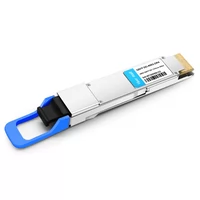 QSFP-DD-400G-DR4 400G QSFP-DD DR4 PAM4 1310nm 500m MTP/MPO SMF FEC Optical Transceiver Module
$450.00
QSFP-DD-400G-DR4 400G QSFP-DD DR4 PAM4 1310nm 500m MTP/MPO SMF FEC Optical Transceiver Module
$450.00
-
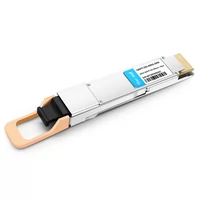 QSFP-DD-400G-SR8 400G QSFP-DD SR8 PAM4 850nm 100m MTP/MPO OM3 FEC Optical Transceiver Module
$180.00
QSFP-DD-400G-SR8 400G QSFP-DD SR8 PAM4 850nm 100m MTP/MPO OM3 FEC Optical Transceiver Module
$180.00
-
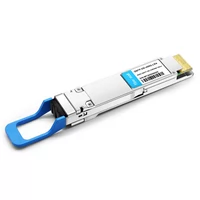 QSFP-DD-400G-LR4 400G QSFP-DD LR4 PAM4 CWDM4 10km LC SMF FEC Optical Transceiver Module
$650.00
QSFP-DD-400G-LR4 400G QSFP-DD LR4 PAM4 CWDM4 10km LC SMF FEC Optical Transceiver Module
$650.00
-
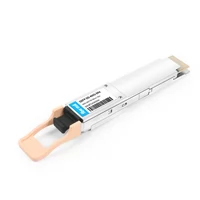 QSFP-DD-400G-SR4 QSFP-DD 400G SR4 PAM4 850nm 100m MTP/MPO-12 OM4 FEC Optical Transceiver Module
$600.00
QSFP-DD-400G-SR4 QSFP-DD 400G SR4 PAM4 850nm 100m MTP/MPO-12 OM4 FEC Optical Transceiver Module
$600.00
-
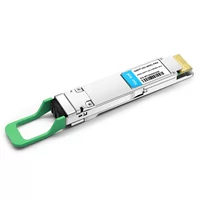 QSFP-DD-400G-FR4 400G QSFP-DD FR4 PAM4 CWDM4 2km LC SMF FEC Optical Transceiver Module
$600.00
QSFP-DD-400G-FR4 400G QSFP-DD FR4 PAM4 CWDM4 2km LC SMF FEC Optical Transceiver Module
$600.00
-
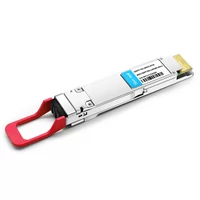 QSFP-DD-400G-ER4 400G QSFP-DD ER4 PAM4 LWDM4 40km LC SMF without FEC Optical Transceiver Module
$4500.00
QSFP-DD-400G-ER4 400G QSFP-DD ER4 PAM4 LWDM4 40km LC SMF without FEC Optical Transceiver Module
$4500.00
-
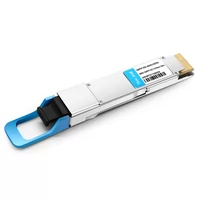 QSFP-DD-400G-XDR4 400G QSFP-DD XDR4 PAM4 1310nm 2km MTP/MPO-12 SMF FEC Optical Transceiver Module
$650.00
QSFP-DD-400G-XDR4 400G QSFP-DD XDR4 PAM4 1310nm 2km MTP/MPO-12 SMF FEC Optical Transceiver Module
$650.00
-
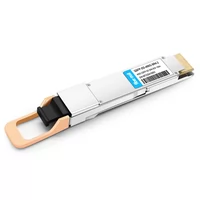 QSFP-DD-400G-SR4.2 400Gb/s QSFP-DD SR4 BiDi PAM4 850nm/910nm 100m/150m OM4/OM5 MMF MPO-12 FEC Optical Transceiver Module
$1000.00
QSFP-DD-400G-SR4.2 400Gb/s QSFP-DD SR4 BiDi PAM4 850nm/910nm 100m/150m OM4/OM5 MMF MPO-12 FEC Optical Transceiver Module
$1000.00
-
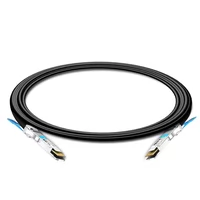 QSFPDD-400G-PC50CM 0.5m (1.6ft) 400G QSFP-DD to QSFP-DD PAM4 Passive Direct Attach Copper Twinax Cable
$80.00
QSFPDD-400G-PC50CM 0.5m (1.6ft) 400G QSFP-DD to QSFP-DD PAM4 Passive Direct Attach Copper Twinax Cable
$80.00
-
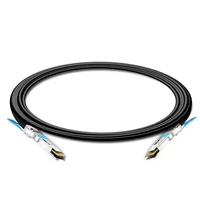 QSFP-DD-400G-AC3M 3m (10ft) 400G QSFP-DD to QSFP-DD PAM4 Active Direct Attach Copper Twinax Cable
$350.00
QSFP-DD-400G-AC3M 3m (10ft) 400G QSFP-DD to QSFP-DD PAM4 Active Direct Attach Copper Twinax Cable
$350.00
